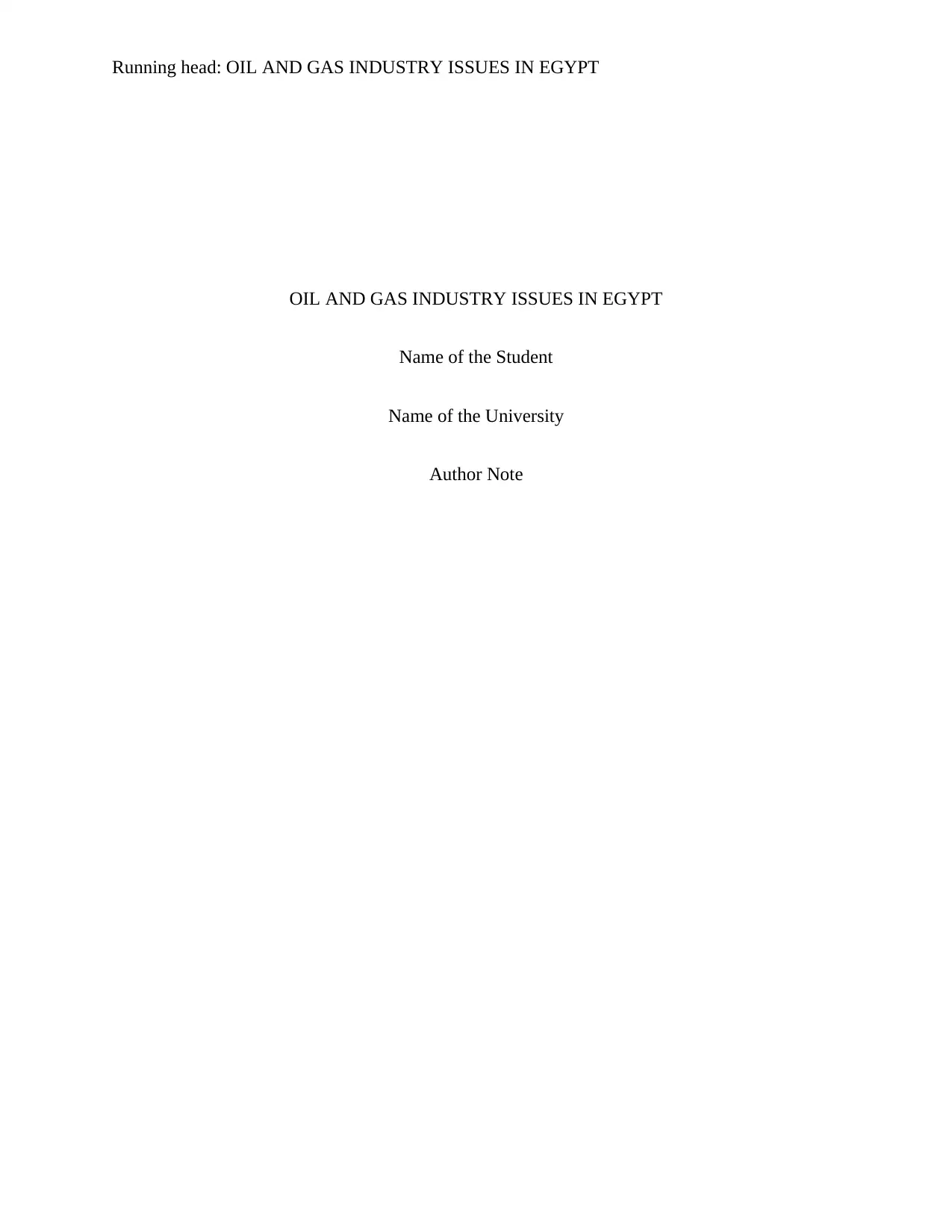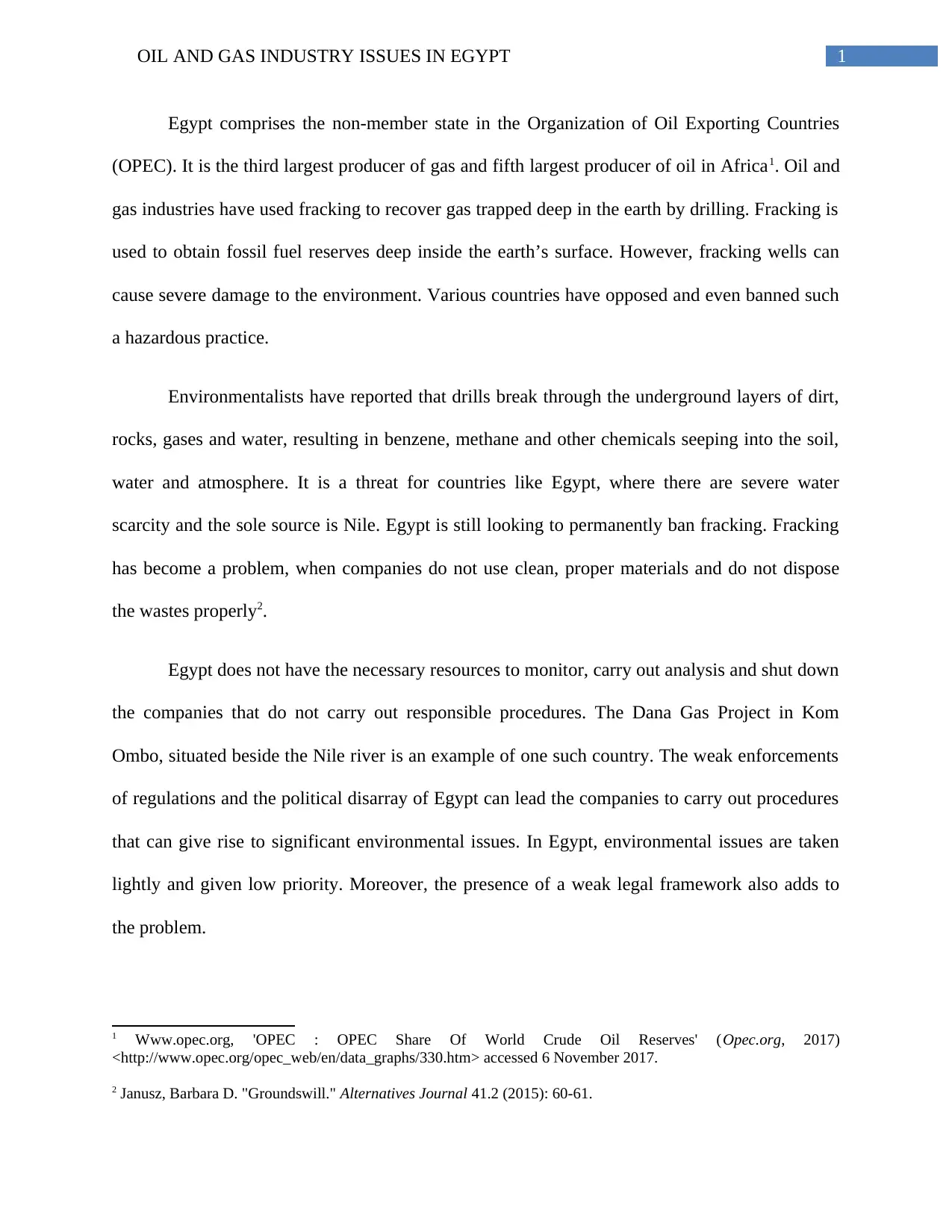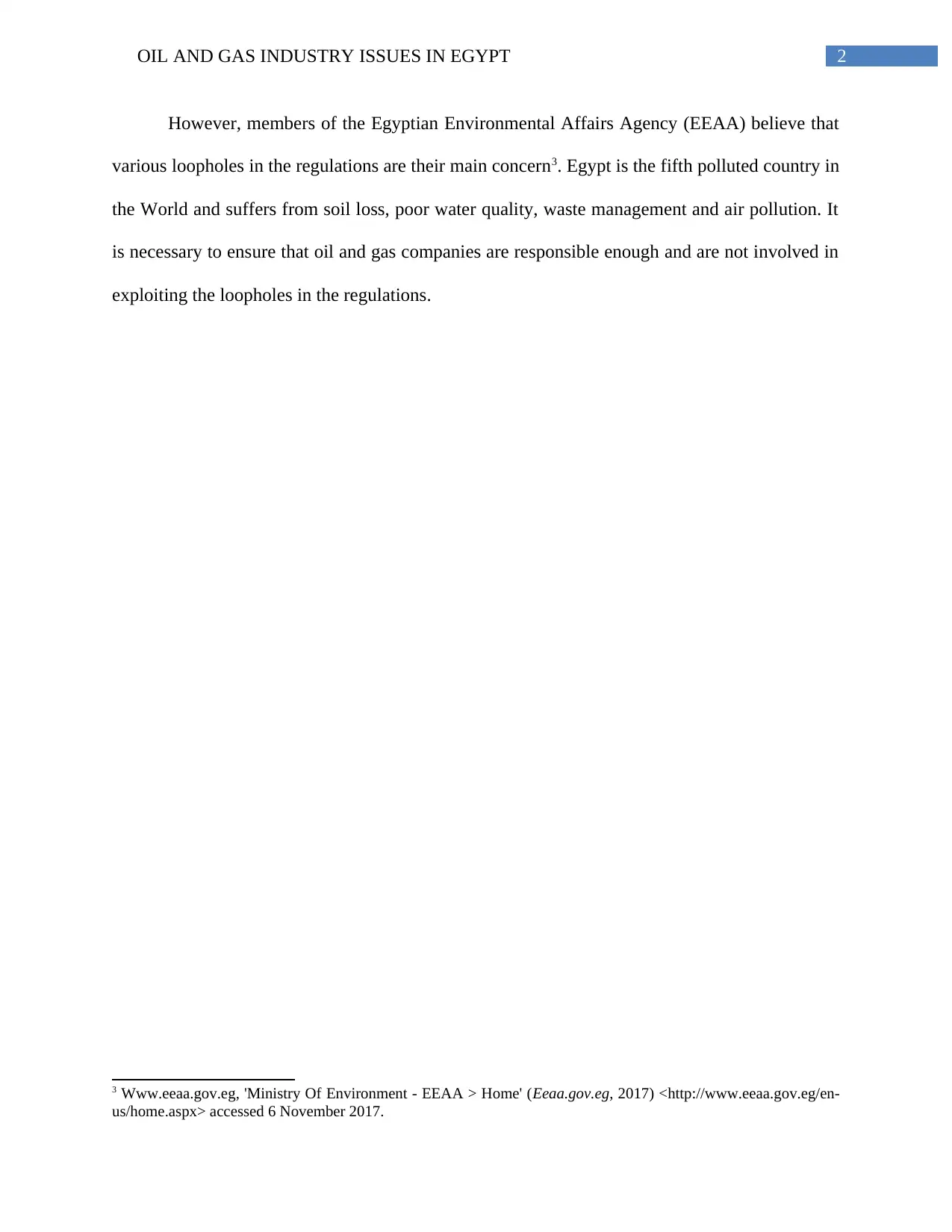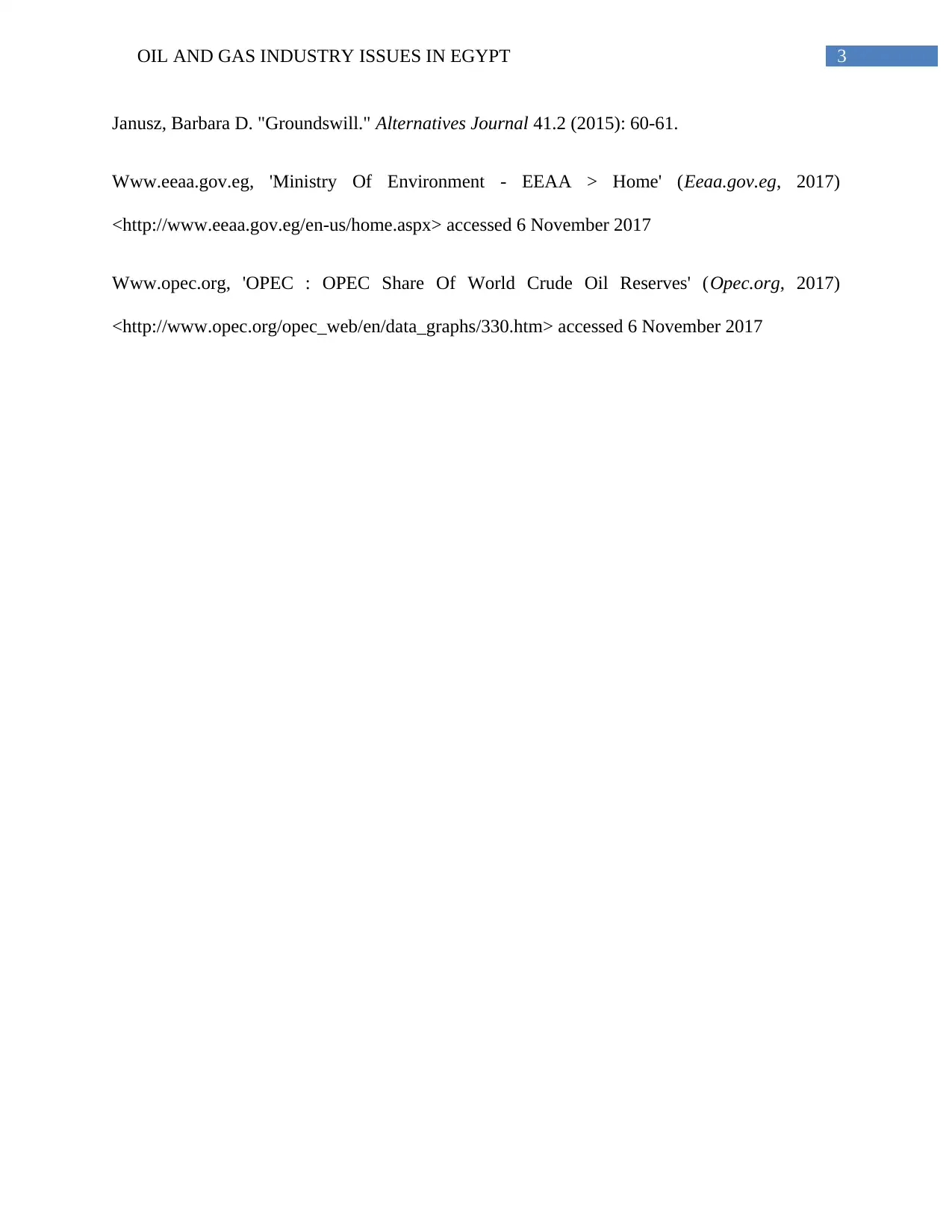A Report on the Environmental Concerns: Oil and Gas Industry in Egypt
VerifiedAdded on 2020/04/21
|4
|461
|137
Report
AI Summary
This report delves into the environmental challenges faced by the oil and gas industry in Egypt. It highlights the use of fracking, its potential environmental impacts, and the associated risks, including soil and water contamination. The report emphasizes Egypt's vulnerability due to water scarcity and its reliance on the Nile. It also discusses the lack of stringent environmental regulations and the consequences of weak enforcement, leading to pollution and other environmental problems. The report references specific examples like the Dana Gas Project and highlights Egypt's ranking as one of the most polluted countries globally, underscoring the need for improved regulations, responsible industry practices, and environmental protection measures. The report also draws on information from sources like the Egyptian Environmental Affairs Agency (EEAA) and OPEC data to support its analysis.
1 out of 4







![[object Object]](/_next/static/media/star-bottom.7253800d.svg)